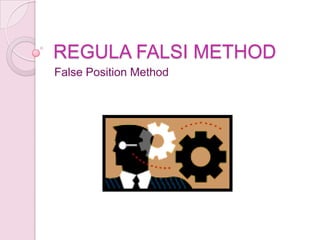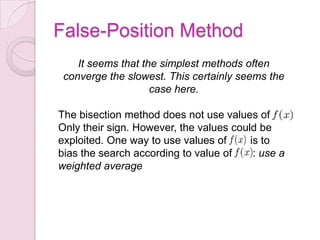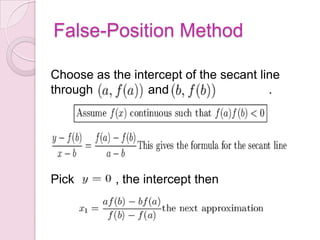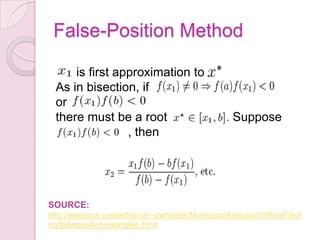Regula falsi method
- 1. REGULAFALSI METHODFalse Position Method
- 2. False-Position MethodIt seems that the simplest methods often converge the slowest. This certainly seems the case here. The bisection method does not use values of . Only their sign. However, the values could be exploited. One way to use values of is to bias the search according to value of : use a weighted average
- 3. False-Position MethodChoose as the intercept of the secant line through and . Pick , theinterceptthen
- 5. False-Position Method is first approximation to As in bisection, if or there must be a root Suppose , then SOURCE: http://www.ece.uwaterloo.ca/~dwharder/NumericalAnalysis/10RootFinding/falseposition/examples.html




